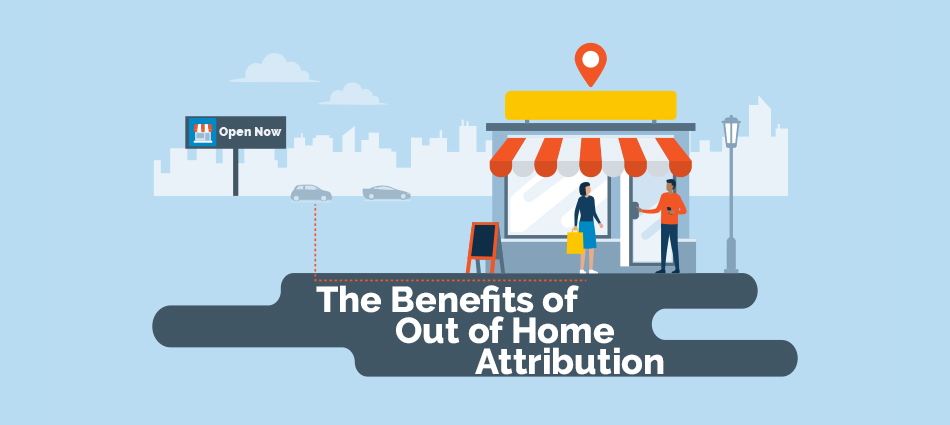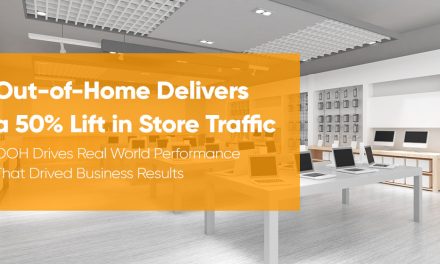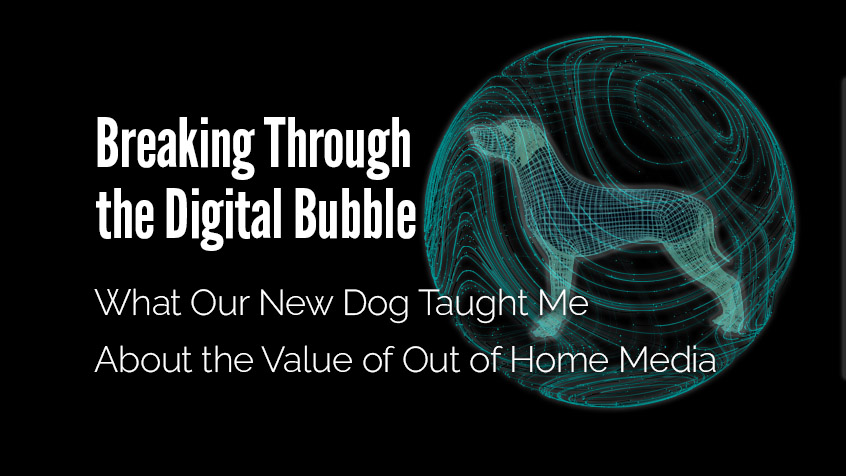The benefits of Out of Home attribution are widely misunderstood throughout the marketing community. Marketing is full of perceived truths that, under full scrutiny, don’t hold water. Email isn’t truly dead, not all publicity is good publicity, and no digital media is not inherently more measurable than other channels, like Out of Home.
That last statement especially deserves further scrutiny. If you’re not asking about how to attribute your Out of Home marketing efforts, now is the time. Some benefits of Out of Home attribution include proper attribution studies and measurements that can help you justify your marketing strategy, gain market insights, and better allocate your budget.
Yes, digital channels have traditionally had a leg up on OOH in this arena. You can easily track clicks to tell you which efforts are working. But, in truth, these easy digital attributions cannot tell you the whole story.
With the advent of smartphones, Out of Home has been able to develop its own set of attribution solutions. Because they are still relatively new, few marketers are aware of them. So, let’s take a closer look into the benefits of Out of Home attribution and the three different ways running attribution studies on your Out of Home media plans can improve your marketing long-term.

1. The Benefits of Out of Home Attribution for Optimizing Your Ad Spend
The natural goal of any marketer, and by extension any business, is to ensure their advertising dollars are well-spent. With the right strategy in place, building attribution studies and models for your Out of Home campaigns can help to accomplish just that.
For example, brick-and-mortar locations can use the insights gained by a footfall study to determine how effectively their OOH campaigns are driving consumers to their retail location. The same kind of study can also help hone in on the specific geographic areas and radii, providing the best return for the advertiser suggesting campaign optimizations over time.

Footfall studies can also help advertisers determine which creative messages and visuals are most effective at driving traffic to the business. These insights, in turn, can lead be used to optimize ad spend help to improve marketing ROI.
Of course, the benefits of Out of Home attribution are not just beneficial for brick-and-mortar locations. Online brands can leverage attribution models to paint a better picture of the audience’s journey to a purchase.
That picture can enhance and supplant the traditional “last click” model of digital ad attribution. This is a problematic model because it ignores consumer brand awareness that is built in the long term but doesn’t lead to immediate action. Learning about your OOH campaigns’ impact helps avoid assigning too much weight to digital media just because they drove that last click before the purchase.

2. The Benefits of Out of Home Attribution for Better Audience Insights
While defining your target audience is standard procedure before a new marketing campaign, you can continue to learn about that audience well into the execution of a campaign. Their response to specific ads allows you to learn about their interests and behaviors, filling out their profile and creating a clearer picture of that audience.
At its most basic level, the benefits of Out of Home attribution in media can help to confirm whether you are targeting the right audience. At the same time, the proper attribution study can also suggest an alternative audience you might not have thought of.

Consider brand awareness studies as an example. Tying a longitudinal study that takes place over a defined period to your specific OOH campaign helps you determine what messages succeed in driving your awareness and positioning and your ads’ role in achieving the desired results.
These studies can lead to significant and sometimes surprising insights. In one recent study for an emerging cannabis brand, the advertiser learned that one of the main barriers to entry was unfamiliarity with the brand itself, but a more fundamental lack of education and awareness on the benefits of Hemp Oil products in general.
For a teledentistry client, a footfall campaign showed that the target audience that was most likely to show up for their appointment was significantly different from what the advertiser believed. This led them to reevaluate their audience personas, changing both media and creativity across their campaigns to target this subgroup. Insights like these can go a long way to improving audience match and advertising effectiveness over time.
3. The Benefits of Out of Home Attribution for Future Market Planning
Finally, marketing efforts rarely exist in a vacuum. At their best, they are a part of a continuous chain of events, always aiming to improve ad performance and ROI over time.
In many industries, the customer journey is changing drastically. Outbound sales were once the primary driver of consumer action; even complex sectors like real estate are increasingly moving to a self-service environment. Access to information and technology has made that shift ubiquitous across industries.
That shift, in turn, has made the customer journey more complex, with different audience groups preferring different types of channels and messaging. Understanding which of these channels drive the most attention and revenue is crucial, and powerful benefits of Out of Home attribution can help in that effort–leading to a more effective allocation of resources over time.
Those insights are especially relevant for digital and programmatic OOH, which have drastically sped up the deployment and adjustment periods for even complex ad campaigns. Shifts can happen more quickly and are more directly related to attribution studies that point the way.

Still, the foremost benefit of attribution remains the insights gained for future planning. Through adequate attribution, advertisers can learn:
- When and where to advertise
- What creatives most effectively reach and convince the audience
- Which channels are providing the best ROI
- Which channels can be combined to multiply the effectiveness
All these insights, in turn, lead to a more accurate allocation of media budget, no longer dependent on guesswork but real insights from real audience reactions.
The Future of Out of Home Lies in Attribution Effectiveness
Out of Home campaigns have come a long way in the last few years, and attribution is at the forefront of many of these advances. The use of mobile device IDs, geofencing, and other technologies has begun to provide a more stable, reliable way to measure the actual effect of your OOH campaigns.
Of course, we’re only beginning to scratch the surface of what the data can tell us about the success of our campaigns. Future improvements may focus on better attribution of direct web traffic through OOH channels, a more apparent distinction between geofenced mobile campaigns (a strong tactic when connected to an OOH campaign), and independent measurement of OOH effectiveness.

The future, in other words, is bright. And we’re already at a point where the benefits of a strategic attribution approach to Out of Home media come with real advantages to both the campaigns themselves and your more extensive marketing plans.
So what are you waiting for? Talk to us about your current OOH plans and how the benefits of Out Home attribution can promote your long-term efforts.





